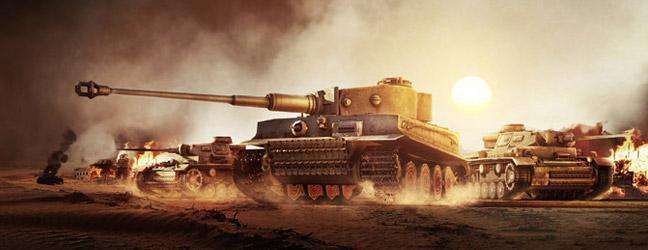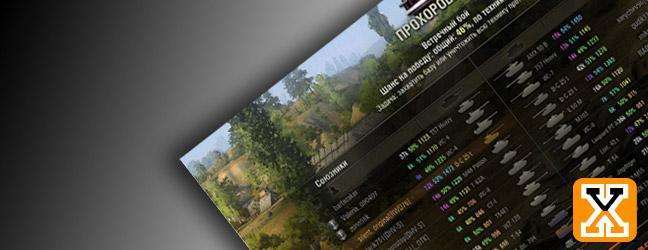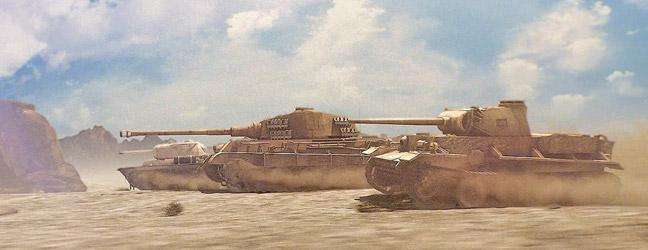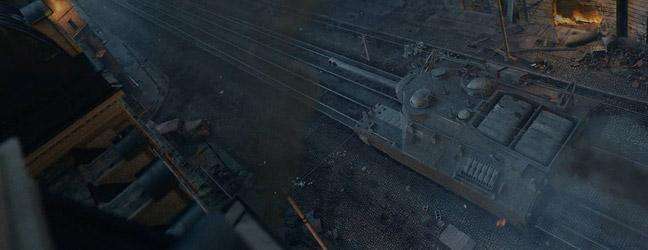Know Your Steel: KV-2
Дата: 10.12.2013 17:11:48
TheKroo: 
Hello tankies,
Welcome to our "Know Your Steel" series of articles. The following articles are going to be dedicated to interesting info and trivia about the tanks we have in game.
A bit of side view on them. We will not go too technical or too deep and will try to provide a fun to read material.
Enjoy in the article.
You can read the first part here, if you have not done so earlier.
KV-2
It was near a city of Raseiniai where Germans had first encountered a unit equipped with the Soviet KV heavy tanks.
2nd Tank Division from Soviet 3rd Mechanised Corps attacked and overran elements of the German 6th Panzer Division on 23 June.
The Germans Panzer 35(t) tanks and antitank weapons were practically ineffective against the Soviet heavy tanks—some of them were out of ammunition, but clashed with and destroyed German antitank guns by literally driving over them.
Attempts to destroy these armoured giants concentrated on first immobilising them by firing at their tracks and then by tackling them with artillery, AA Guns, or by blowing them up at close range by high explosive charges of the Sticky Bomb type.
_KV-2_(154).jpg)
On 23th and 24th June 1941, a single KV-2, tasked with blocking the path in Southern Lithuania, at a crossroads in front of the city of Raseiniai, had managed to cut off elements of the 6th Panzer Division which had established bridgeheads on the Dubysa river. It stalled the Division's advance for a full day.
Germans were in big problems, they lost their entire supply truck column.
Positioned in the middle of the crossroad, this KV-2 had first knocked out the German light tanks, such as Pzkpfw 35(t). As a response Germans brought and mounted the PaK 38 50mm gun, despite hitting the target seven times, the end result was negligible, and the guns were destroyed.
The airstrike was not approved, not for a single tank. The famous 88mm Flak gun was brought to be used. KV-2 was attacked by a variety of antitank weapons, until it finally ran out of ammunition, and was destroyed.
The KV-2A (German designation) appeared during January to February 1940 and mounted a 152mm M –1938/40 L/20 howitzer in a high box turret with all-round traverse, upon the KV-1 hull.
This vehicle was found to be operationally ineffective due to the inability to traverse the turret when on an incline, to provide anti-tank fire and to fire on the move. It was usually fired from stationary and concealed positions.
The 10.8 tonne turret caused an excessively high silhouette of 4.14 meters, as against 2.66 meters for the KV-1. It brought the weight up from 43.5 tonnes to over 51.7 tonnes. The projectiles were those of the corps artillery 152mm howitzers and gun-howitzers.
Two men (for a total of 6) were added to the crew to handle them. The gun had low velocity compared to the M-1937 corps gun of the same calibre, but the Soviets said that the KV-2 proved quite successful against the Mannerheim Line, against which it fired concrete piercing shells.
Since the KVs were produced at the large Kirov plant in Leningrad and were coming out in the later part of 1939, the 2s were ready for use in the late February of 1940 - Steamroller that terminated the Winter War.
If KV-2s were a success in positional warfare assaults, they were a notorious failure in the mobile campaigns fought against the Germans in the summer of 1941.
KV-2s were in action as early as the third day of the German attack (June29) at Soposkinie in Poland.
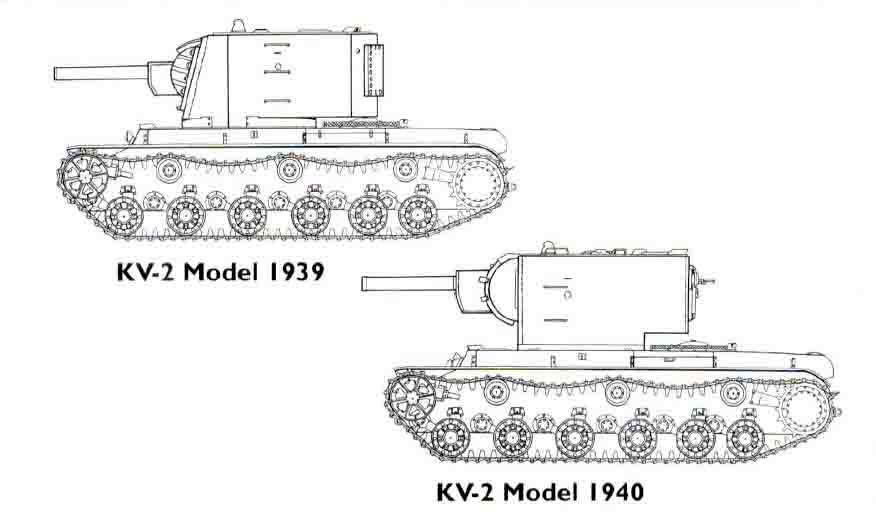
KV-2B. During 1940 a second model was produced, the KV-2B which had a new turret and wider tracks, being based on the newer KV-1B chassis. The model was taken into service, but showed little improvement over the first version.
A flame-throwing version of the KV-2B was produced in limited numbers.
Several experiments were conducted as well.
During 1943, two experimental variants were developed: KV-2-1 with the 85mm anti-tank gun of the KV-85, and the KV-2-2 with the new 122mm anti-tank gun. Even these models failed to meet the requirement of tank assault gun or self-propelled artillery; no further development of the KV-2 is known to have taken place.
Specifications for the
KV-2 (Kilmenti Voroshilov)
Heavy Tank /Assault Gun
Country of Origin: Soviet Union
Manufacturer: State Factories - Soviet Union
Initial Year of Service: 1940
Production: 255
Crew: 6
Overall Length: 6.79
Width: 3.32m
Height: 3.65m
Weight 51.7 tonnes
Powerplant: 1 x V-2K 12 cylinder diesel engine developing 550 horsepower.
Maximum Speed: 25.6 km/h
Maximum range: 140 km
Armament:
1 x 152mm M –1938/40 L/20
1 x 7.62mm DT coaxial machine gun
1 x 7.62mm DT machine gun in rear facing position at rear of turret
Ammunition:
36 x 152mm projectiles
3,087 x 7.62 ammunition
Armour: up to 110mm

Hello tankies,
Welcome to our "Know Your Steel" series of articles. The following articles are going to be dedicated to interesting info and trivia about the tanks we have in game.
A bit of side view on them. We will not go too technical or too deep and will try to provide a fun to read material.
Enjoy in the article.
You can read the first part here, if you have not done so earlier.
KV-2
It was near a city of Raseiniai where Germans had first encountered a unit equipped with the Soviet KV heavy tanks.
2nd Tank Division from Soviet 3rd Mechanised Corps attacked and overran elements of the German 6th Panzer Division on 23 June.
The Germans Panzer 35(t) tanks and antitank weapons were practically ineffective against the Soviet heavy tanks—some of them were out of ammunition, but clashed with and destroyed German antitank guns by literally driving over them.
Attempts to destroy these armoured giants concentrated on first immobilising them by firing at their tracks and then by tackling them with artillery, AA Guns, or by blowing them up at close range by high explosive charges of the Sticky Bomb type.
_KV-2_(154).jpg)
On 23th and 24th June 1941, a single KV-2, tasked with blocking the path in Southern Lithuania, at a crossroads in front of the city of Raseiniai, had managed to cut off elements of the 6th Panzer Division which had established bridgeheads on the Dubysa river. It stalled the Division's advance for a full day.
Germans were in big problems, they lost their entire supply truck column.
Positioned in the middle of the crossroad, this KV-2 had first knocked out the German light tanks, such as Pzkpfw 35(t). As a response Germans brought and mounted the PaK 38 50mm gun, despite hitting the target seven times, the end result was negligible, and the guns were destroyed.
The airstrike was not approved, not for a single tank. The famous 88mm Flak gun was brought to be used. KV-2 was attacked by a variety of antitank weapons, until it finally ran out of ammunition, and was destroyed.
The KV-2A (German designation) appeared during January to February 1940 and mounted a 152mm M –1938/40 L/20 howitzer in a high box turret with all-round traverse, upon the KV-1 hull.
This vehicle was found to be operationally ineffective due to the inability to traverse the turret when on an incline, to provide anti-tank fire and to fire on the move. It was usually fired from stationary and concealed positions.
The 10.8 tonne turret caused an excessively high silhouette of 4.14 meters, as against 2.66 meters for the KV-1. It brought the weight up from 43.5 tonnes to over 51.7 tonnes. The projectiles were those of the corps artillery 152mm howitzers and gun-howitzers.
Two men (for a total of 6) were added to the crew to handle them. The gun had low velocity compared to the M-1937 corps gun of the same calibre, but the Soviets said that the KV-2 proved quite successful against the Mannerheim Line, against which it fired concrete piercing shells.
Since the KVs were produced at the large Kirov plant in Leningrad and were coming out in the later part of 1939, the 2s were ready for use in the late February of 1940 - Steamroller that terminated the Winter War.
If KV-2s were a success in positional warfare assaults, they were a notorious failure in the mobile campaigns fought against the Germans in the summer of 1941.
KV-2s were in action as early as the third day of the German attack (June29) at Soposkinie in Poland.

KV-2B. During 1940 a second model was produced, the KV-2B which had a new turret and wider tracks, being based on the newer KV-1B chassis. The model was taken into service, but showed little improvement over the first version.
A flame-throwing version of the KV-2B was produced in limited numbers.
Several experiments were conducted as well.
During 1943, two experimental variants were developed: KV-2-1 with the 85mm anti-tank gun of the KV-85, and the KV-2-2 with the new 122mm anti-tank gun. Even these models failed to meet the requirement of tank assault gun or self-propelled artillery; no further development of the KV-2 is known to have taken place.
Specifications for the
KV-2 (Kilmenti Voroshilov)
Heavy Tank /Assault Gun
Country of Origin: Soviet Union
Manufacturer: State Factories - Soviet Union
Initial Year of Service: 1940
Production: 255
Crew: 6
Overall Length: 6.79
Width: 3.32m
Height: 3.65m
Weight 51.7 tonnes
Powerplant: 1 x V-2K 12 cylinder diesel engine developing 550 horsepower.
Maximum Speed: 25.6 km/h
Maximum range: 140 km
Armament:
1 x 152mm M –1938/40 L/20
1 x 7.62mm DT coaxial machine gun
1 x 7.62mm DT machine gun in rear facing position at rear of turret
Ammunition:
36 x 152mm projectiles
3,087 x 7.62 ammunition
Armour: up to 110mm
Know Your Steel: KV-2

